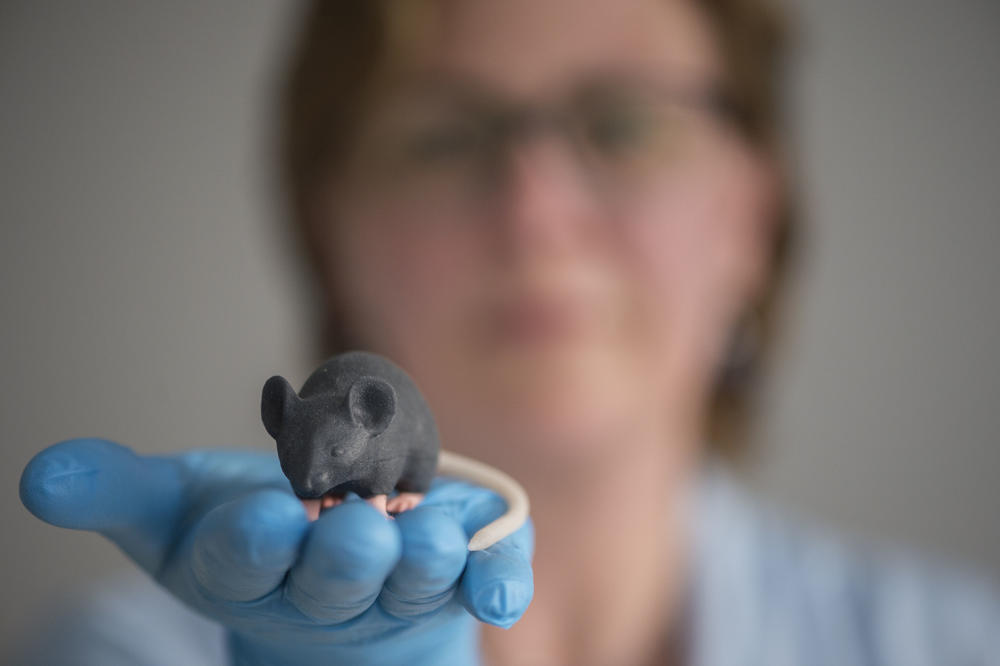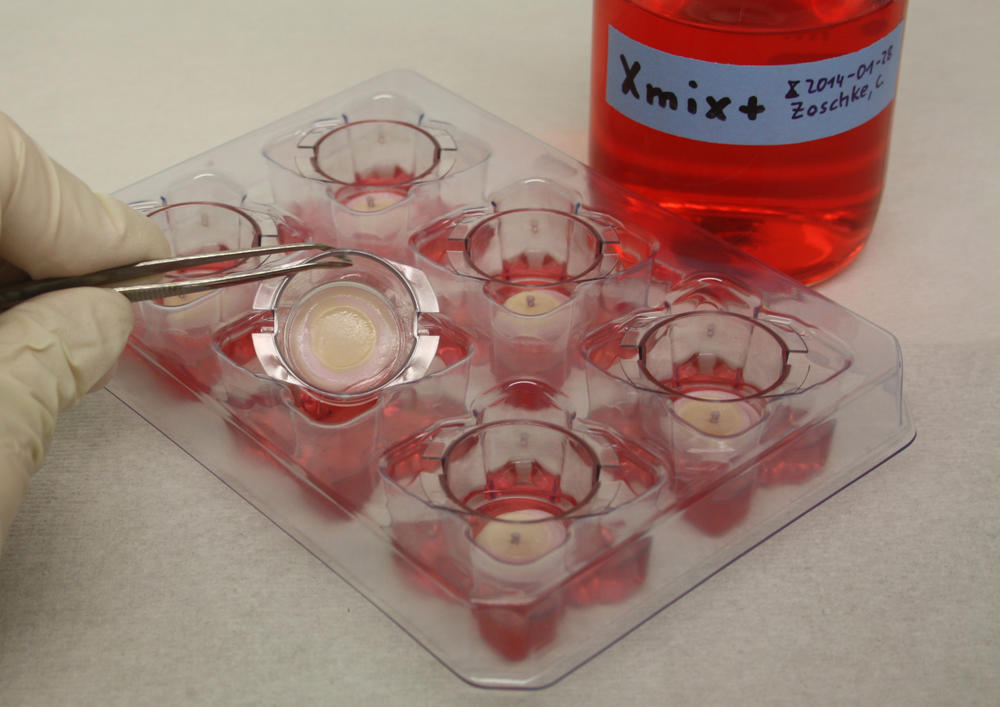How Modern Technology Helps People and Animals
In the BB3R research platform, Berlin universities and non-university institutions work together to develop alternatives to animal testing.
Jun 13, 2017
Modeling the mouse: Partners to the BB3R research platform seek alternatives to animal testing.
Image Credit: Bernd Wannenmacher
When Professor Monika Schäfer-Korting first started in the early 1990s, many colleagues did not take her seriously. Using artificial skin models to test ways of treating skin complaints on human cells instead of on animals did not sound feasible. Yet it is. In fact it works so well that students of pharmacy at Freie Universität Berlin do not have to do any more animal testing at all.
Over the years, other places in Berlin also saw progress on animal-free testing methods for biomedical research and teaching. “But individual working groups did not have the efficiency to make advances in this important area quickly enough,” says Schäfer-Korting. So in 2014 she launched BB3R, the Berlin-Brandenburg research platform.
The Three Rs: Replacement, Reduction, Refinement
The “3R” in BB3R relates to the “three Rs” of replacing, reducing, or refining animal testing. One or more of these three Rs must be present as a criterion for a research project to be accepted for the research platform, which receives funding from the German Federal Ministry of Education and Research. Founding members of BB3R include the Berlin universities, Charité – Universitätsmedizin Berlin, the University of Potsdam, the German Federal Institute for Risk Assessment, and the Zuse Institute Berlin. There are also a number of associated working groups, among others at the Robert Koch Institute.
Professor Monika Schäfer-Korting is a pharmacologist, Executive Vice President of Freie Universität Berlin, and initiator of the BB3R, the Berlin-Brandenburg research platform.
Image Credit: Bernd Wannenmacher
The platform brings together a wealth of expertise in pharmacy, pharmacology, toxicology, human and veterinary medicine, bioinformatics, and biotechnology. BB3R also provides training for dedicated young researchers in the field of alternative methods to animal testing.
A central component of BB3R is the graduate program “Innovations in 3R Research: Genetic Engineering, Tissue Engineering, and Bioinformatics.” The young scientists follow two approaches with their thematically very varied research projects: “One set of researchers works on reducing the impact on animals of experiments that cannot be replaced, for example by targeted reduction of pain and stress. Other colleagues aim to use alternative methods to obtain useful findings for human medicine,” says Monika Schäfer-Korting, spokesperson for the BB3R platform.
This includes in silico substance analysis where biochemical processes are simulated in a computer and the recent organ-on-a-chip technology that is used to simulate the interaction of multiple organs. It also encompasses bioprinting, a brand-new technology involving a 3D printer to create tissue and organs.
In the doctoral students’ seminar, the researchers swap notes and discuss their projects. Researchers from other institutions are also welcomed to the annual BB3R Spring School, which is dedicated each year to one of the three "R"s.
Multidisciplinary Expertise
For maximum research efficiency, three junior professorships have been created under the umbrella of BB3R, and the participating institutions have also made additional appointments related to the 3Rs. One of the junior professors is Andrea Volkamer. Working at Charité – Universitätsmedizin Berlin, the bioinformatician develops software-based methods for predicting the toxicity, if any, of new drugs or chemicals in silico, meaning by computer. Her “personal R” is “reduce.”
“Among other things, we throw big data at large numbers of substances that have been tested in the past and apply machine learning methods to them to generate models with high predictive accuracy,” says Volkamer. “We then use the models on new substances.” The predictions are based on the similarity principle. “If the computer comes to the conclusion that based on its knowledge a substance is toxic, we flag that substance with high risk potential.” All Volkamer needs to launch the program is the chemical structure of the new molecule in question.
The scientists grow skin models from skin cells to test new medicines.
Image Credit: Christian Zoschke
Although she only moved to Berlin from the Saarland, the other end of Germany, in 2016, Volkamer has already been able to forge close research contacts through BB3R, for example with colleagues at the Zuse Institute Berlin and Freie Universität. “The great thing about BB3R is being able to tap into so much multidisciplinary expertise,” she says.
“It’s ideal for us bioinformaticians to have our application right on the doorstep, and the predictions we generate give our experimental colleagues the timely and cost-efficient information they need to prioritize molecules.” For Volkamer, this makes the seminars “simply brilliant. You learn about what the others are doing, get into conversation, and that leads to ideas for whole new lines of enquiry.”
It was in one of the seminars that the idea was born for a joint project with Sarah Hedtrich. Also a BB3R junior professor, Hedtrich develops skin models at Freie Universität to replicate neurodermatitis in 3D cell cultures. “We take ten or fifteen hairs from a patient’s head and put them on a cell culture plate.
After two weeks, the keratinocytes and fibroblasts have grown and the two cell types have formed colonies that we can separate.” The fibroblasts – connective tissue cells that lend structure and strength to the skin – are embedded in a collagen matrix. This mixture effectively forms the subcutaneous layer. “As soon as this has formed, we seed keratinocytes on it and afterwards expose the whole lot to the air.” Within days, artificial skin is formed that is very similar to the real organ in all its complexity.
In her research, Hedtrich aims to develop drugs to intercept a messenger substance that keratinocytes generate in connection with neurodermatitis and that evidently stimulates the overactive immune response that leads to the inflammation typical of the disease. Volkamer will make use of special techniques to predict the structure of small molecules that can block this inflammatory mediator. The best inhibitors will then be synthesized and tested on a skin model.
Professor Sarah Hedtrich also appreciates the lively research network at BB3R and already works in collaboration with a number of colleagues. Many of them are researchers she may never have met without BB3R.



